







Search:
Alkanes are compounds of carbon and hydrogen atoms linked together by single bonds.
The → hybridization of orbitals of the carbon atom explains the geometry of alkane molecules:

These values are found approximately in all alkanes.
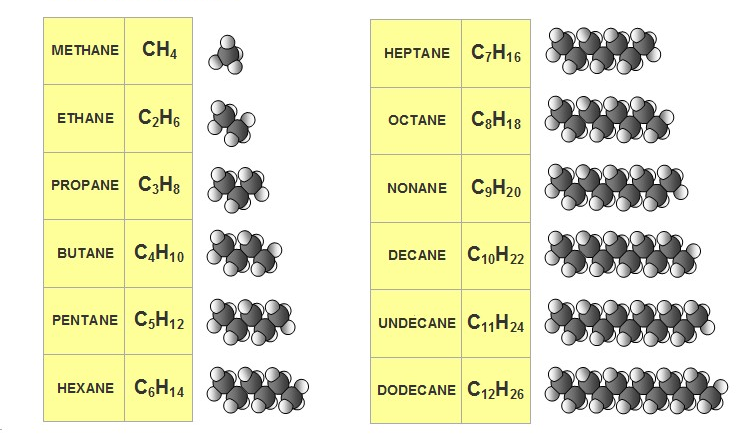
General formula: CnH2n+2 for n=1,2....
Methane, ethane, propane and butane are colorless gases at room temperature. The other alkanes are colorless liquids whose viscosity increases with the molar mass to the point where they become solid, for example:
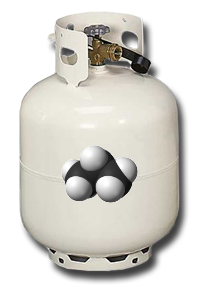
Propane tank
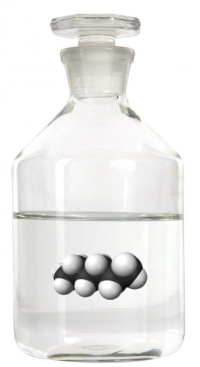
Hexane
Boiling and melting temperatures increase with the number n of carbon atoms

because - the heavier molecules , the more inert they are, and therefore more the more difficult to separate and to project in the gas phase. - Van der Waals forces of attraction between molecules increase with their contact surface
The alkanes are insoluble in water because
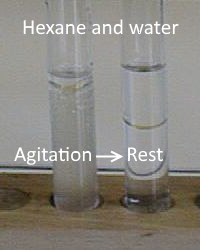
- they are non-polar molecules, because the electronegativity difference between carbon (2.5) and hydrogen (2.1) is low - water is polar and we know that polar and non-polar molecules do not mix (see → here ).
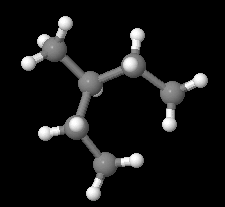
3-Methylpentane
General formula: CnH2n+2 for n=1,2....
Nomenclature is explained → here Other examples may be found → here

Cyclopentane
General formula: CnH2n for n=1,2....
Other examples may be found → here
Branched alkanes generally have boiling and melting temperatures inferior to those of linear alkanes with the same number of carbon atoms, for example:
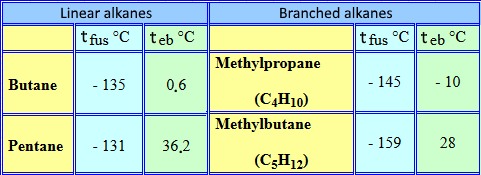
This is because these molecules have between them a smaller contact area, so weaker intermolecular forces! Like linear alkanes, such substances are insoluble in water and for the same reason.
The cyclic alkanes generally have boiling and melting superior to those of linear alkanes of the same number of carbon atoms, example:

This is because these molecules, are crammed more closely into each other because of their regularity and thus have between them stronger intermolecular forces! Like linear alkanes, such substances are insoluble in water and for the same reason.